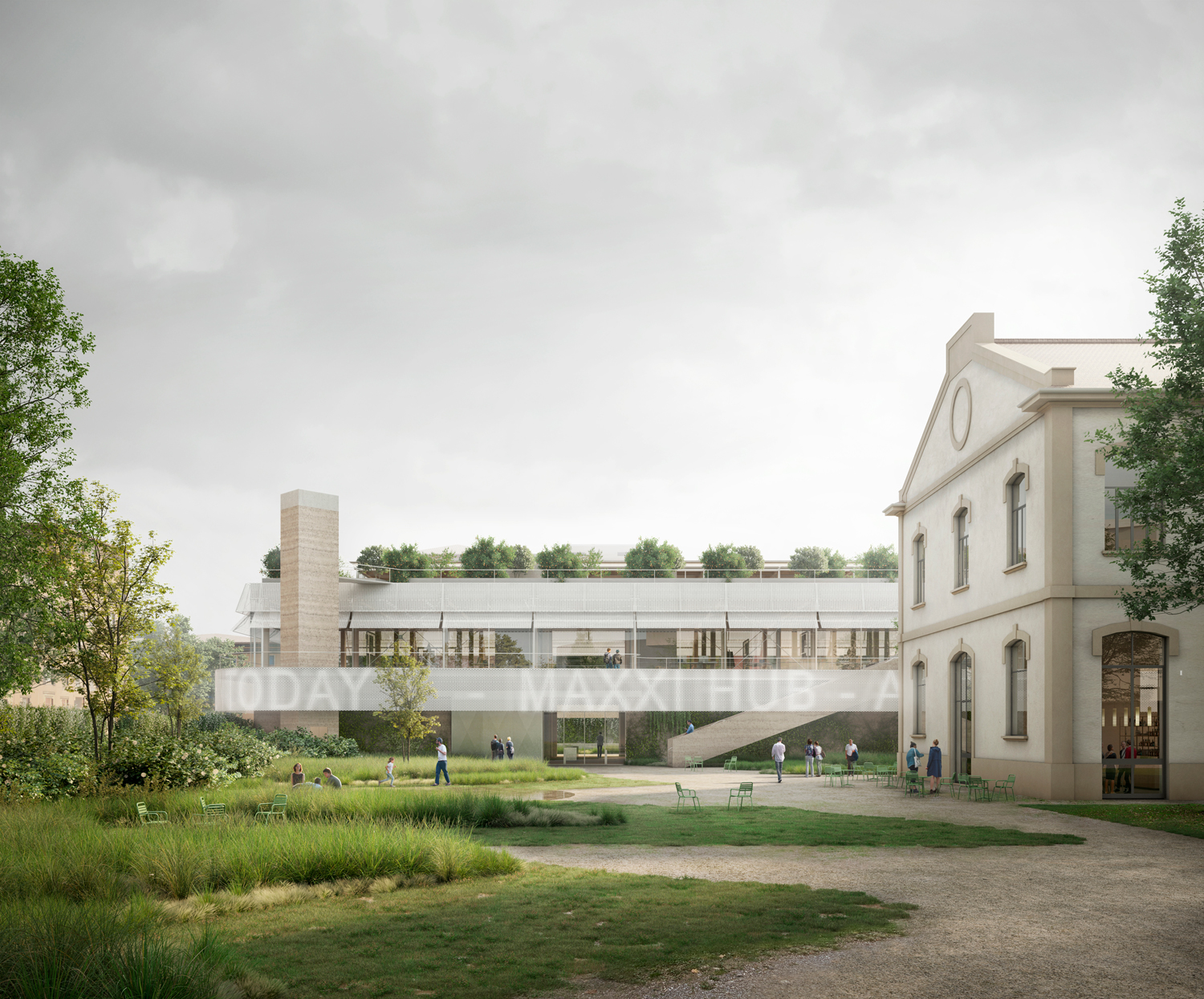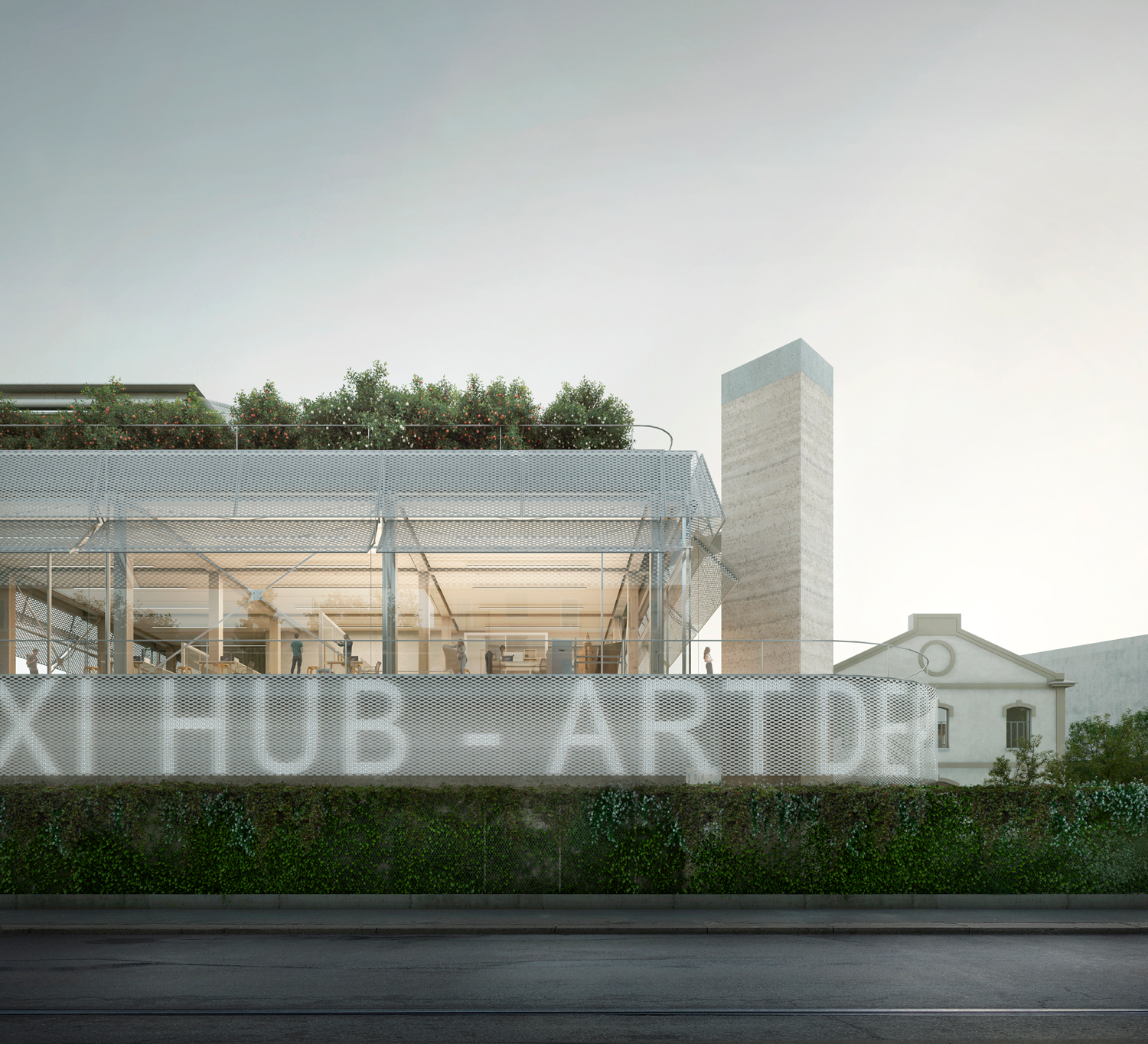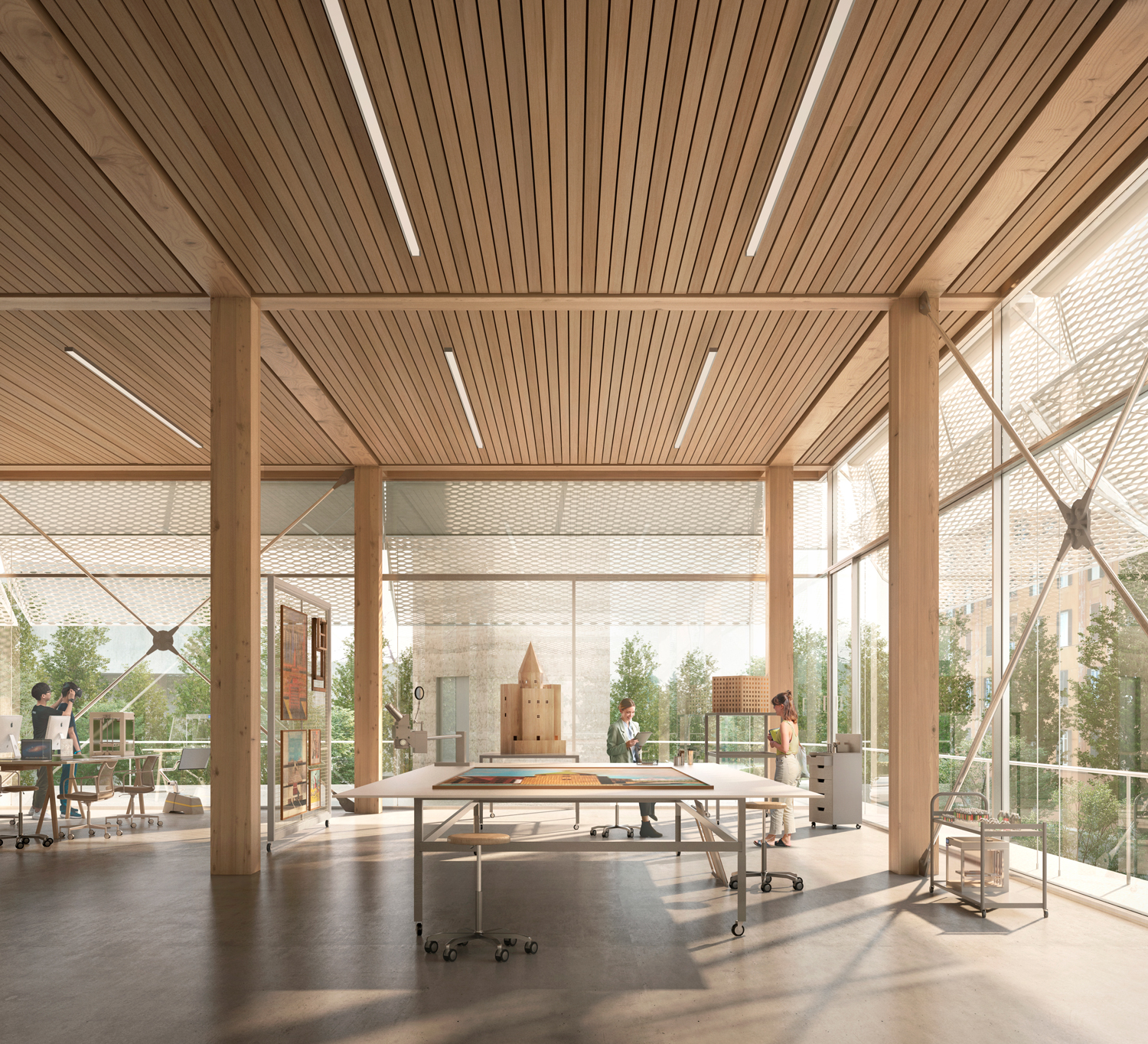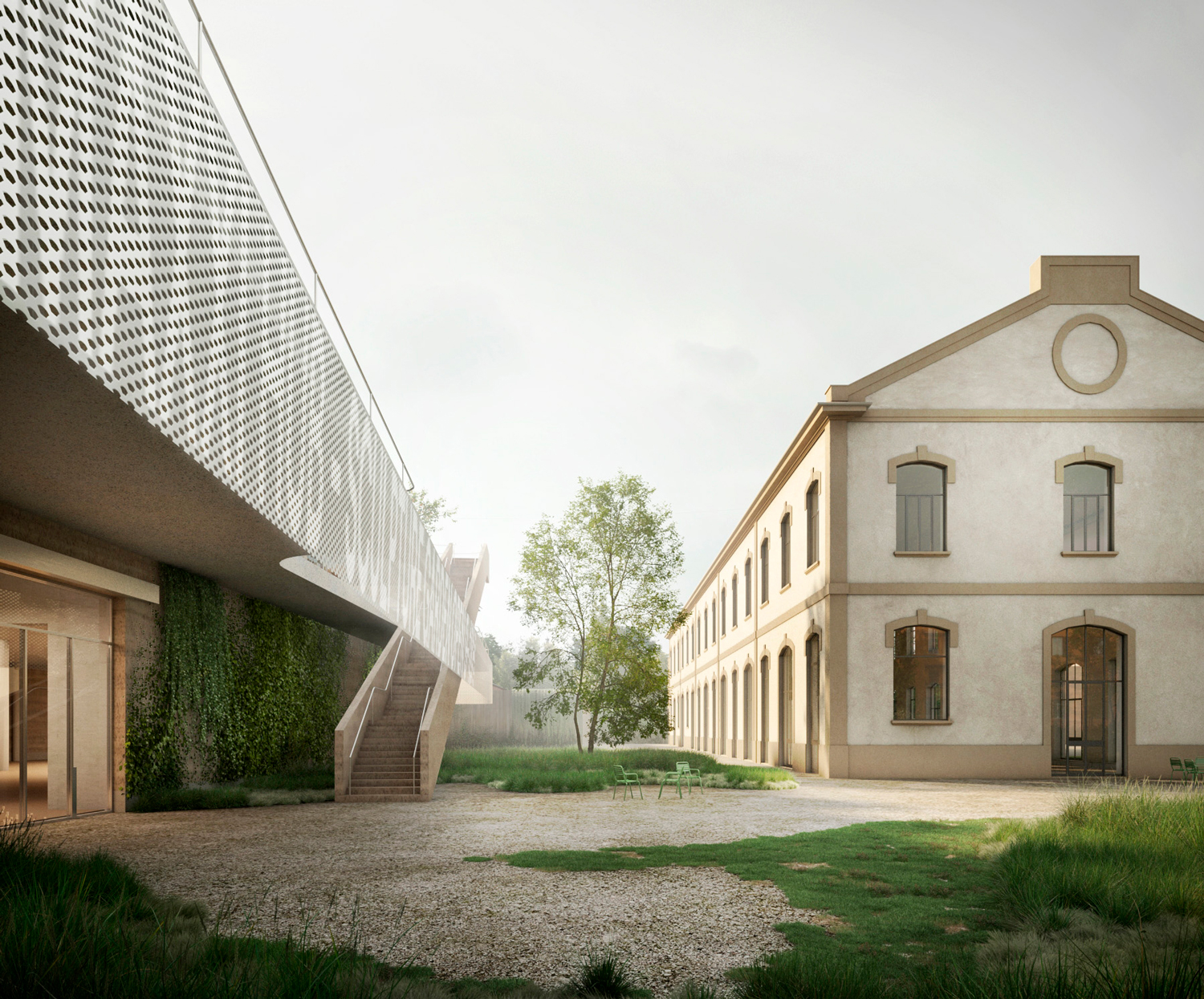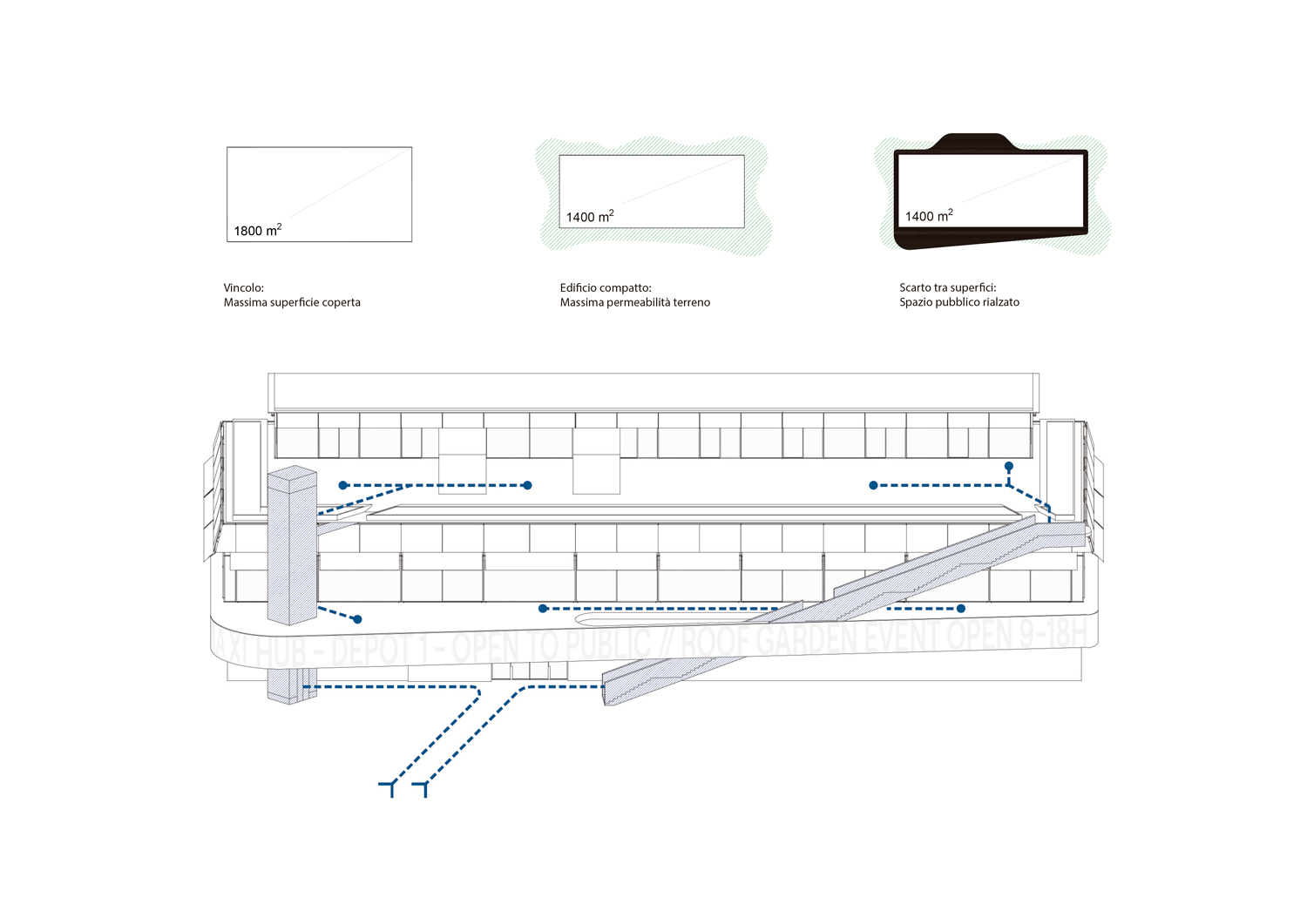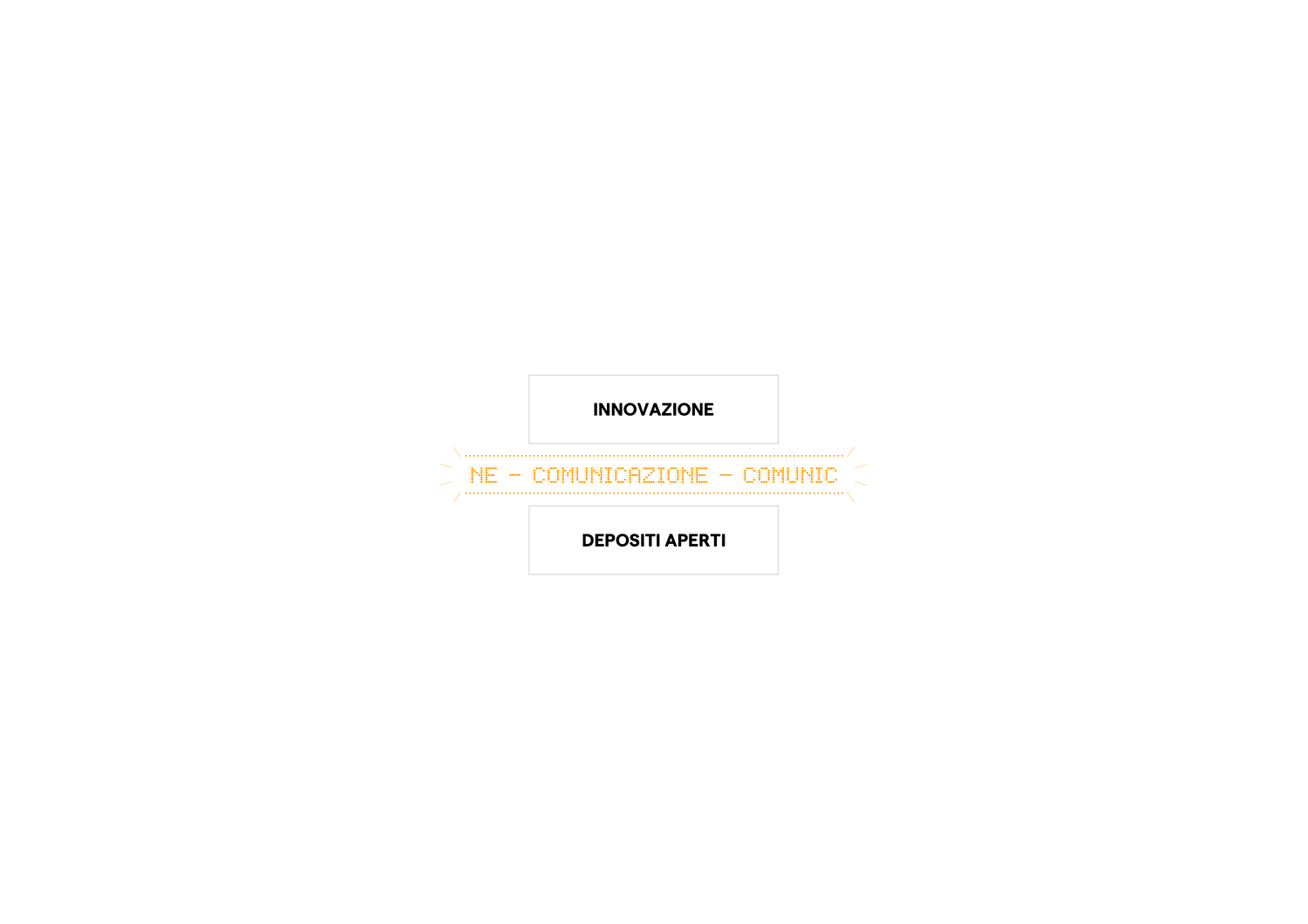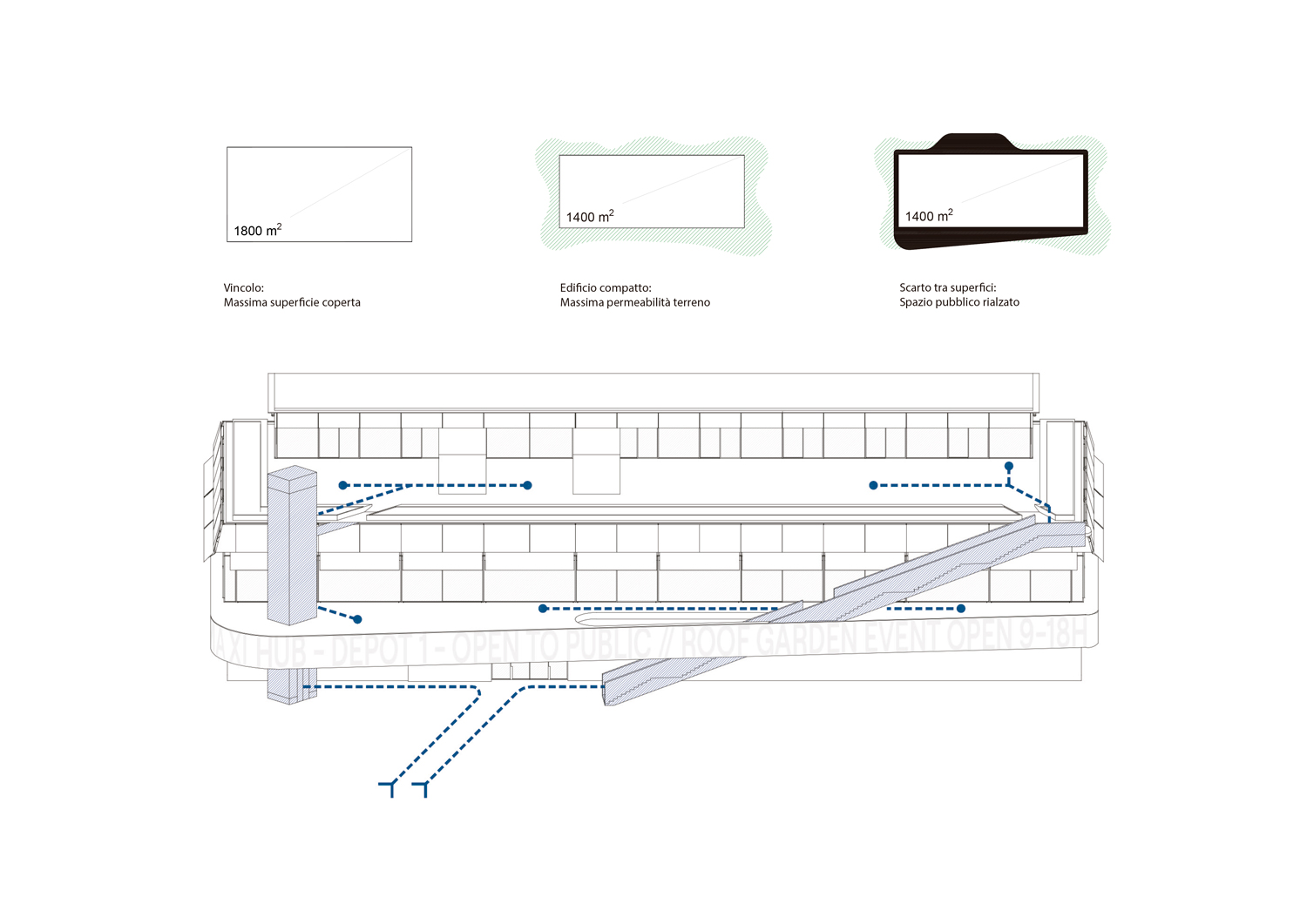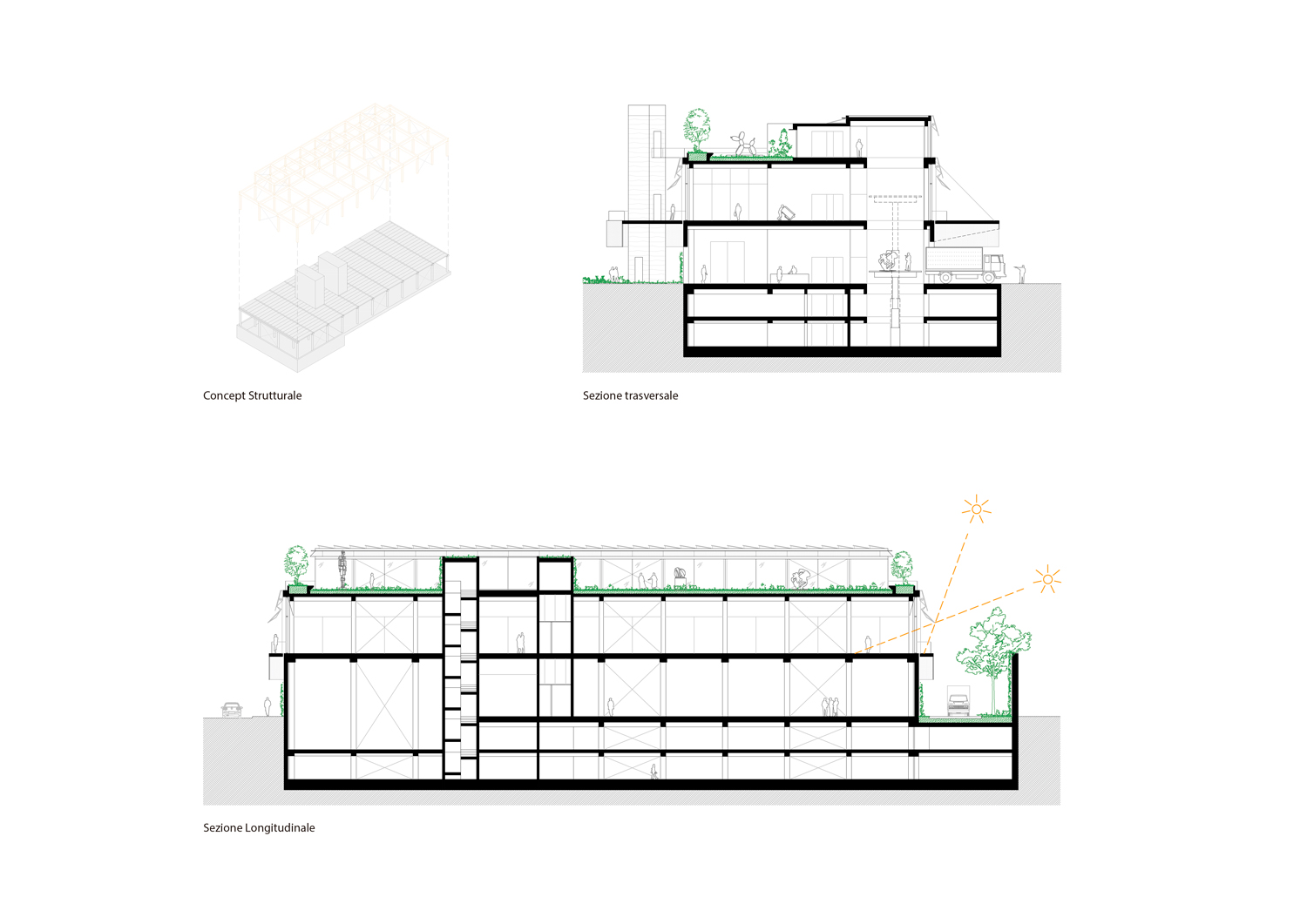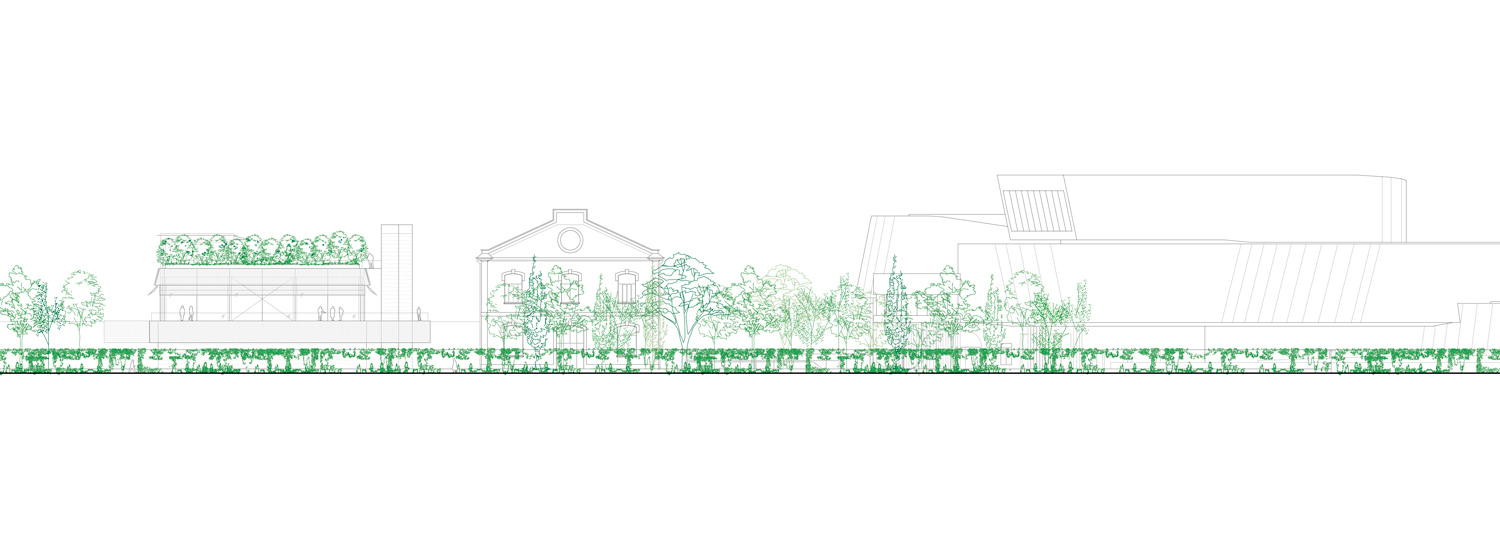☉ MAXXI Hub is an honour mention competition entry by 4051 ORTUS Giorgio Azzariti and Edoardo Cappella for MAXXI in 2022. It is located in Rome Italy in an urban setting. Its scale is medium with a surface of 4.500 sqm. Key material is wood. Filippo Bolognese collaborated as visualizer. Review the 4 proposals for the same competition.
MAXXI Hub is a proposal for the Grande MAXXI International Competition in Rome, awarded with anhonourable mention by the jury. The project, conceived as an extension of the existing museum complex, includes alarge landscape intervention aimed at providing the site with a new green infrastructure, and a new building hostingcutting edge research and learning facilities, plus much needed storage space for MAXXI’s large art and architecturecollection.
This project is the result of the collaboration between 4051 (Francesca Mavaracchio, Nicola Ragazzini), ORTUS (Paolo Catrambone), Edoardo Cappella and Giorgio Azzariti – with Joao Nunes as Landscape Architect. The proposal has the ambition to regenerate the entire area in which it sits. Conceived as a gesture at the urbanscale, it aims at integrating seamlessly with the existing sequence of green spaces spanning from Villa Glori, throughVia Masaccio, down to the river Tiber. The new landscape has the intention to build an ecological system that willallow – by means of a simple topographical infrastructure and its consequent rainwater reuse strategy – to increasethe quantity of green spaces beyond what was originally indicated by the brief.
This “infrastructural” use of landscape will allow to maximize the green draining surfaces and the quantity ofvegetation, thus leading to a double outcome: the reduction of the heat island phenomenon through night-timeevaporation on one hand, and the absorption of a larger quantity of rainwater (expected to rise in intensity in thefuture) on the other. A rich programmatic sequence is hosted within and throughout these new topographies,including: open-air galleries with works by artists and landscape designers, urban farming gardens for a new circularfood provision concept and spaces to play and relax.
The new green system develops along the whole northern border of the museum grounds, culminating in the Hub, a new building with a clear geometry which comprises two large external volumes of public circulation and a horizontalLED communication band. This element holds everything together while communicating the heterogenous activitieswithin the Hub to the outside world. The massing is conceived as a simple stack: on the ground floor, a monolithicpodium invaded by vegetation and vines growing on its rammed-earth surfaces holds the art and architecturewarehouses; on the upper, an elegant timber structure – a light, glazed volume, permeated by light and air, whichhosts the laboratories for art restoration and digital innovation. All around, a generous terrace encompasses thevolume and completes the geometry, offering accessible outdoor space to its users. The building culminates with aroof garden, directly accessible from ground level through two large elements, the staircase and the lift-tower. Thisspace, partially occupied by a classroom pavilion, is clearly defined by a dense citrus perimeter, where lemon,mandarin and orange trees enclose a contemplative space for the fruition of site-specific works of art.
In terms of a sustainable design approach, the footprint of the building is hyper compact, reaching maximum efficiencyin the occupation of the plot’s total surface. Firstly, this choice intends to reduce façade surfaces as much as possible,thus maximizing energy efficiency. Secondly, a compact geometry allows for an ideal programmatic functionality: theminimization of circulation spaces leads to a clear contiguity between the different layers of the program (warehouses, laboratories and classrooms), generating a single, flexible building organism.
Both the Hub and the landscape intervention fit coherently into the energetic and technological upgrade envisioned bythe MAXXI, which aims to achieve carbon neutrality of its whole complex. The use of recyclable and low carbonbuilding materials, beyond a sustainable approach based on both passive and active design strategies, will help tocreate a synergetic system that integrates with the existing collection of buildings and MAXXI’s overall vision for itsfuture.
